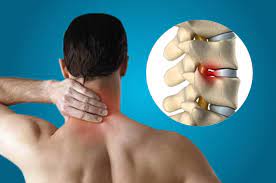There are several types of spinal deformity. Listed below are some of the most common types and causes. You can learn about symptoms, diagnosis, treatment options, and prevention of spinal deformity in children. This condition affects the spine and may result in pain and reduced quality of life. Although it may not be life threatening, treatment is necessary for the prevention of further damage. Symptoms include back pain, slouching, and difficulty walking.
Symptoms
Symptoms of spinal deformity vary widely. They depend on the type and severity of the deformity. A deformity without symptoms is called idiopathic, although some are inherited. Spinal deformities can affect a child’s bones, ligaments, and muscles. Sometimes they are congenital, meaning a child is born with them. However, if symptoms do occur, they may be mild or infrequent.
There are many reasons for a person to develop a deformity, including injury or age. Spinal deformities can affect the way your back moves, causing pain, strain, and even breathing problems. Treatments for spinal deformity may include physical therapy, medications, and surgery. But if deformity is stable, there may be no need for intervention. But if the deformity is unstable and progressing, it may not respond to treatment and may even worsen over time.
Diagnosis
A physician will use several diagnostic tests to determine the presence of spinal deformity. These tests include a physical exam, X-rays of the spine, and a CT scan. Sometimes additional imaging is needed to determine the exact structure of the spinal cord and nerves. If these tests do not reveal a specific cause, the diagnosis may be a mild degenerative scoliosis. A physician can also prescribe a treatment to correct the deformity.
The most common reason for consultation is spinal misalignment, which may have multiple causes. In adolescence, scoliosis is the most common spinal deformity, and it is idiopathic in 80% of cases. In adults, degenerative conditions like osteoporosis may be the cause. Imaging studies will help a physician determine the precise cause of a spinal deformity and prescribe treatment. Treatment for spinal deformity depends on the extent of the deformity, the treatment goal being to prevent further progression and to restore flexibility and balance.
Treatments
In some cases, a spinal deformity is a result of an underlying medical condition, such as osteoporosis. Treatments may include calcium, hormone replacement therapy, and weight-bearing exercises. In addition, adults may undergo bracing. While bracing will not change the position of the spine, it may alleviate pressure and pain. Orthotics may also help reduce back pain. Often, a team of specialists will work together to determine the best treatment plan.
A doctor can diagnose a spinal deformity by performing a physical examination and x-rays of the spine. The physician can evaluate the deformity by bending the patient forward and observing how it moves. Surgery may be needed if the deformity is severe or involves nerve root dysfunction. If surgery is needed, however, a spinal surgeon will be able to fix the deformity. After a thorough physical examination, your physician can determine which treatment is right for you.
Prevention
Surgical intervention is not the only option for the prevention of spinal deformity. The etiology of spinal deformity is complex and includes genetics, biomechanical factors, and neuromuscular dysfunction. Advances in the field of clinical research are identifying the factors that contribute to the occurrence and progression of spinal deformity. Better prevention strategies are possible, thanks to the increasing understanding of the causes. In this article, we will briefly review some surgical interventions that have improved the outcomes of spinal deformity.
The research also suggests that identifying the patterns of spinal curvature in young children can help predict if these children will develop scoliosis during adolescence. Predicting the development of scoliosis could ultimately lead to better preventative measures. The study was led by Saba Pasha, director of the Children’s Hospital of Philadelphia’s Orthopatric Engineering and 3D Musculoskeletal Imaging. The results were published online in the journal Nature Scientific Reports.
Best Spine Surgeon in India – Dr Yogesh Pithwa
If you are looking for a specialist in spine surgery in Bangalore, then you should consider Dr. Yogesh Pithwa. His expertise includes Minimally invasive spine surgery. He has received multiple awards and has performed many complex surgeries, including post-tubercular kyphosis and posterior column shortening. Read on to know more about Dr. Pithwa.


 '
'